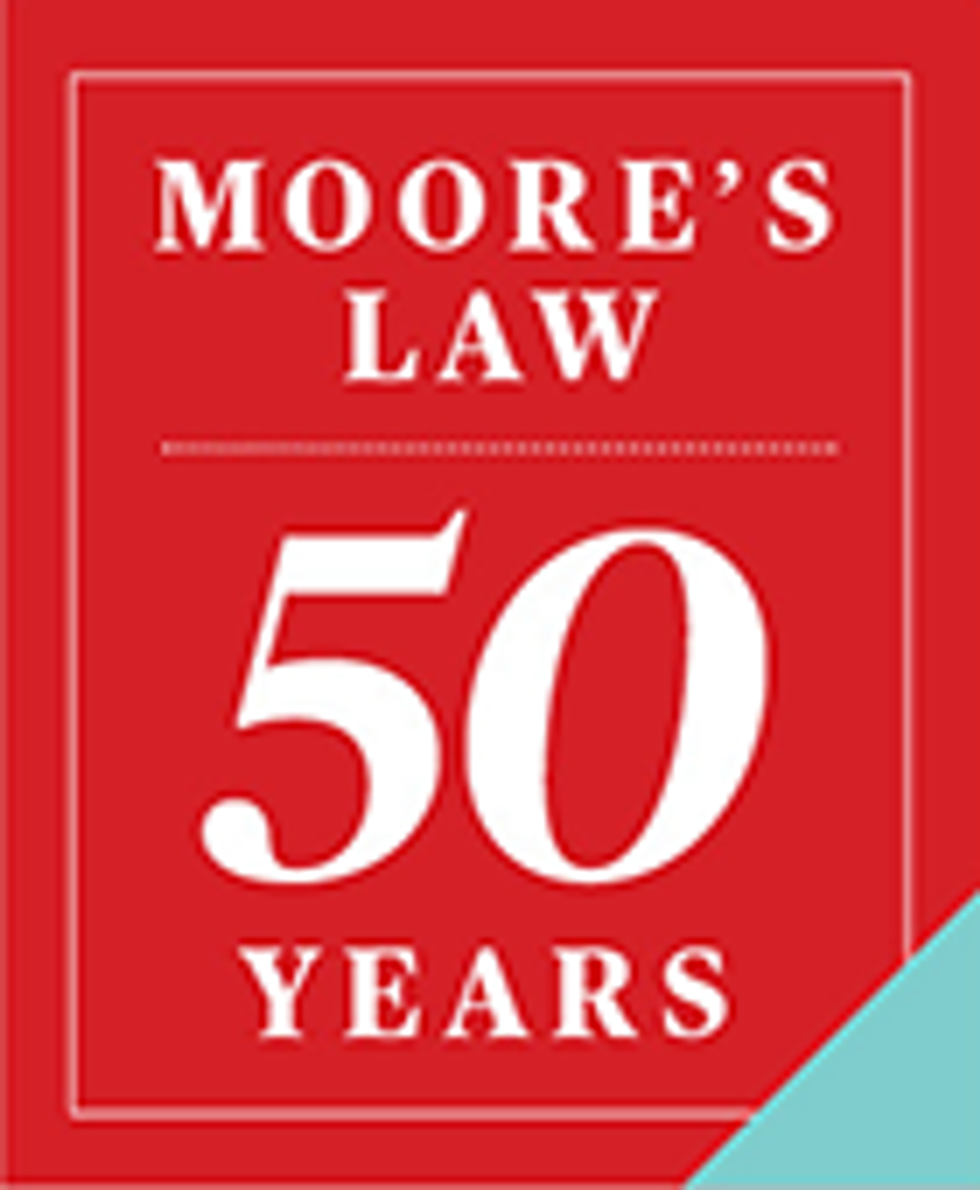What is Moore’s Law? Pinning down a single clear definition has turned out to be quite tricky. Throughout its history, Moore’s Law has been continually reformulated to preserve its accuracy. At the same time, it’s been reapplied by futurists and economists to areas far removed from integrated circuit manufacturing, such as solar energy and razor blades. Indeed, we wouldn’t be celebrating the semicentennial of Moore’s Law if it weren’t so amenable to constant reinterpretation.
Which raises the deeper question: What kind of thing is Moore’s Law? It seems clear that Moore’s Law is not a law of nature in any commonly accepted sense. As historian David Brock put it in a book commemorating the 40th anniversary, “Moore’s Law has not and will not happen of its own accord.” If, for instance, the global economy broke down or the market for microprocessors evaporated, there would be insufficient capital and incentive for firms to push Moore’s Law forward.
There is, of course, some connection between Moore’s Law and the laws of nature. The physical behavior of all the things that have gone into making chips—silicon, silicon dioxide, aluminum, copper, photochemical resists, developing agents, plasma and acid etches, photolithography masks—have played a part in engineers’ ability to keep Moore’s Law going. Some authors, most notably former Wired editor Kevin Kelly, argue that Moore’s Law is actually immanent in the materials of microelectronics, and therefore there is little we humans can do to accelerate it—and perhaps not much we could do to slow it down.
Brock takes the opposite view, that Moore’s Law is more like a law passed by the U.S. Congress. By that he means, roughly, that the leading institutions of the semiconductor industry have agreed, or “legislated,” to maintain Moore’s Law because it is a useful coordinating mechanism. There is a need for such an arrangement because semiconductor manufacturing requires many complex, interdependent process steps. Changes to any step require coordination not only of the firms that make the tools and materials involved in that one step but also firms involved in up- and downstream steps. Because of that complexity, process changes must be planned long before the chip generation that needs them exists.
Coordination that extends well beyond the boardroom and factory floor and into laboratories conducting long-range research has been vital. Since 1965, microelectronics manufacturers’ capacity to do in-house, long-range research has declined. In fact, Gordon Moore himself led that trend—both Fairchild Semiconductor and Intel Corp. were revolutionary in deemphasizing in-house basic research. The two companies kept their own researchers close—physically and intellectually—to the factory floor and thus were able to convert their research into products in months, not decades. Especially in its early days, Intel prospered in part by leaving long-range and basic research to companies like IBM and RCA. The success of the Intel model has encouraged semiconductor manufacturing firms to shift the burden of long-range research onto equipment vendors, universities, consortia, state and federal governments, and philanthropic foundations.
Thus, semiconductor manufacturing innovation is distributed among many organizations that are interdependent, but also not fully transparent to one another. For this to work, some target is required so that everyone knows what to aim for even if they don’t know exactly what everyone else is doing. In the legislative interpretation, Moore’s Law provides that target. Nowadays, enshrined in the International Technology Roadmap for Semiconductors, Moore’s Law has established benchmarks for almost every conceivable aspect of the manufacturing process that any firm, agency, or university can work toward.
Moore’s Law is a human construct. As with legislation, though, most of us have little and only indirect say in its construction. In our everyday lives, Moore’s Law feels more like a fact of life than a vast, coordinated effort. Even those who might seem as though they have plenty of agency—say, the CEOs of semiconductor manufacturing firms or the project managers at the International Technology Roadmap—are largely locked into Moore’s Law, because they believe their collaborators and competitors are locked in. Everyone, both the producers and consumers of microelectronics, takes steps needed to maintain Moore’s Law, yet everyone’s experience is that they are subject to it.
In that sense, Moore’s Law most closely resembles the empirical laws that economists formulate to describe the behavior of human collectivities, such as the laws of supply and demand. Economic laws, like Moore’s Law, are shaped by material obduracy—some goods are scarcer or harder to make than others—but they also arise from the unconscious inclinations of human individuals and collectivities. And yet, these laws are also influenced by the conscious declarations of certain actors and institutions: presidents, chancellors of the exchequer, central banks, and so on. Similarly, while there are material constraints to how fast we can learn to miniaturize commercial integrated circuits, mass production is necessarily a social process shaped both by collective inputs, such as consumer demand, and by individual pronouncements about how fast the business cycle should be.
The sociologist Donald MacKenzie once said that economics is “an engine, not a camera.” What he meant was that economics isn’t a snapshot of how humans would conduct trade if economists weren’t around. Rather, economists actively help make the environment for trade. Moore’s Law is the same kind of thing—and it has proven to be a very durable engine indeed.
About the Author
Cyrus Mody is an associate professor of history at Rice University, in Houston. He is working on a book, The Long Arm of Moore’s Law: Microelectronics and American Science, about the impact of Moore’s Law on government, academic, and industrial research and research policy.




